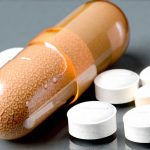Detecting Bladder Pressure with Post-Meal Body Scanning
The intimate connection between what we eat, how our bodies process it, and its impact on bladder function is often overlooked. Many individuals experience fluctuations in bladder pressure after meals – a sensation ranging from mild discomfort to urgent need to void. Understanding why this happens and developing non-invasive methods for detecting these changes can significantly improve quality of life for people managing conditions like overactive bladder, interstitial cystitis, or simply those seeking better control over their bodily functions. Traditional diagnostic methods often rely on subjective reporting or invasive procedures; however, advancements in body scanning technologies are opening up new possibilities for objective and personalized monitoring of internal physiological processes, including those related to the urinary system.
This article will delve into the emerging field of post-meal body scanning as a potential tool for detecting bladder pressure changes. We’ll explore the underlying physiology that links food intake to bladder behavior, examine current and developing scanning technologies, discuss the benefits and limitations of this approach, and consider its future role in personalized healthcare. It’s crucial to remember that this technology is still evolving, and its application should always be guided by qualified healthcare professionals. The goal isn’t to self-diagnose but to understand a potentially valuable tool for better understanding one’s body and collaborating with medical teams on tailored management strategies.
Physiological Links Between Food Intake and Bladder Pressure
The relationship between eating and bladder function is complex, stemming from several interconnected physiological mechanisms. It’s not simply about increased fluid intake; the type of food consumed, digestive processes, hormonal responses, and even psychological factors all play a role. When we eat, our bodies initiate a cascade of events that directly or indirectly affect the bladder.
One key factor is the activation of the digestive system. As food moves through the gastrointestinal tract, it triggers peristalsis – rhythmic contractions of intestinal muscles. This movement can put pressure on the bladder and surrounding pelvic organs. Certain foods are known to be more irritating to the bladder than others, potentially exacerbating this effect. These include caffeinated beverages, alcohol, spicy foods, acidic fruits (like citrus), and artificial sweeteners. Furthermore, the digestive process itself releases hormones that influence bladder function. For example, gastrointestinal hormones can impact vasopressin release, affecting kidney function and urine production. Understanding how to adjust meals during antibiotic use can also be helpful in managing these effects.
Finally, there’s a strong mind-body connection at play. The act of eating often triggers anticipatory voiding reflexes – essentially, our brains prepare for potential urination based on past experiences or learned associations. This can lead to increased bladder awareness and a perceived need to urinate even before the bladder is full. Understanding these intricate relationships is paramount when interpreting data from body scans and tailoring dietary adjustments accordingly. The goal of post-meal scanning isn’t just to detect pressure changes, but to understand their cause and how they relate to an individual’s unique physiology and eating habits.
Body Scanning Technologies for Bladder Pressure Detection
Several body scanning technologies are showing promise in the detection of bladder pressure fluctuations after meals. These methods differ in their underlying principles, cost, accessibility, and level of detail provided.
Bioelectrical Impedance Analysis (BIA) is one emerging technique. BIA measures electrical resistance within the body to estimate fluid distribution and hydration levels. Because changes in bladder filling alter tissue conductivity, BIA can potentially detect variations in bladder volume or pressure. While relatively inexpensive and non-invasive, BIA’s accuracy can be affected by factors like skin impedance and recent fluid intake – making post-meal standardization crucial for reliable results. More advanced versions of BIA are being developed that use multiple frequencies to improve precision and differentiate between fluid compartments. To support overall hydration, understanding how to rehydrate without flooding the bladder is also important.
Ultrasound imaging, specifically bladder ultrasound, has been a long-standing method for assessing bladder volume. However, traditional ultrasound requires trained personnel and can be cumbersome. Portable, handheld ultrasound devices are now becoming more accessible, allowing for self-monitoring or remote assessments. These devices can measure bladder wall thickness and estimate residual urine volume – providing indirect indicators of pressure changes. Combining post-meal ultrasound scans with dietary logs could reveal individual sensitivities to different foods.
Wearable sensors, utilizing technologies like surface electromyography (sEMG) or accelerometry, offer a continuous monitoring approach. sEMG measures electrical activity in pelvic floor muscles, which change their activation patterns as bladder pressure increases. Accelerometers can detect subtle movements associated with changes in posture and abdominal muscle tension – potentially correlating with urinary urgency. These wearable devices are convenient for long-term tracking but require sophisticated algorithms to filter noise and interpret the data accurately.
Challenges & Limitations of Post-Meal Body Scanning
Despite the exciting potential, several challenges and limitations must be addressed before post-meal body scanning becomes a widespread diagnostic or management tool. One significant hurdle is individual variability. Every person’s digestive system and bladder function are unique, meaning that standardized thresholds for “normal” bladder pressure changes may not apply universally.
Another challenge lies in the accuracy and reliability of the scanning technologies themselves. BIA can be affected by hydration status, ultrasound image quality can vary depending on operator skill, and wearable sensors require robust algorithms to minimize false positives. Furthermore, many scans provide indirect measurements of bladder pressure – inferring it from volume estimates or muscle activity rather than directly measuring pressure within the bladder itself.
- Data interpretation is complex: It’s crucial to avoid misinterpreting fluctuations as indicators of a problem when they are simply normal physiological responses.
- The cost and accessibility of certain technologies remain barriers for widespread adoption, particularly for individuals in remote areas or with limited financial resources.
- Ethical considerations related to data privacy and security must also be addressed, especially given the sensitive nature of health information collected through body scanning devices.
Future Directions & Personalized Healthcare Applications
The future of post-meal body scanning lies in integrating these technologies with artificial intelligence (AI) and machine learning (ML). AI algorithms can analyze large datasets of scan data, dietary logs, and symptom reports to identify patterns and predict individual bladder behavior. This personalized approach would allow for tailored recommendations regarding diet, fluid intake, and lifestyle modifications – ultimately empowering individuals to take control of their urinary health.
Imagine a scenario where a wearable sensor detects a consistent increase in bladder pressure after consuming dairy products. An AI algorithm could then recommend reducing dairy intake or experimenting with lactose-free alternatives, based on the individual’s specific response. Furthermore, body scanning data can be integrated into telehealth platforms, allowing for remote monitoring and virtual consultations with healthcare professionals. This approach aligns well with creating personal flow maps to detect urinary triggers.
Ultimately, the goal is to move beyond reactive treatment of urinary symptoms towards proactive prevention and personalized management. By combining advanced scanning technologies with AI-powered analytics, we can unlock a deeper understanding of the complex interplay between diet, digestion, and bladder function – leading to improved quality of life for millions of individuals. This technology should not replace traditional medical evaluation but serve as a complementary tool for enhancing diagnosis and treatment plans under the guidance of qualified healthcare providers. Understanding mindful eating practices can also significantly reduce bladder discomfort.





















